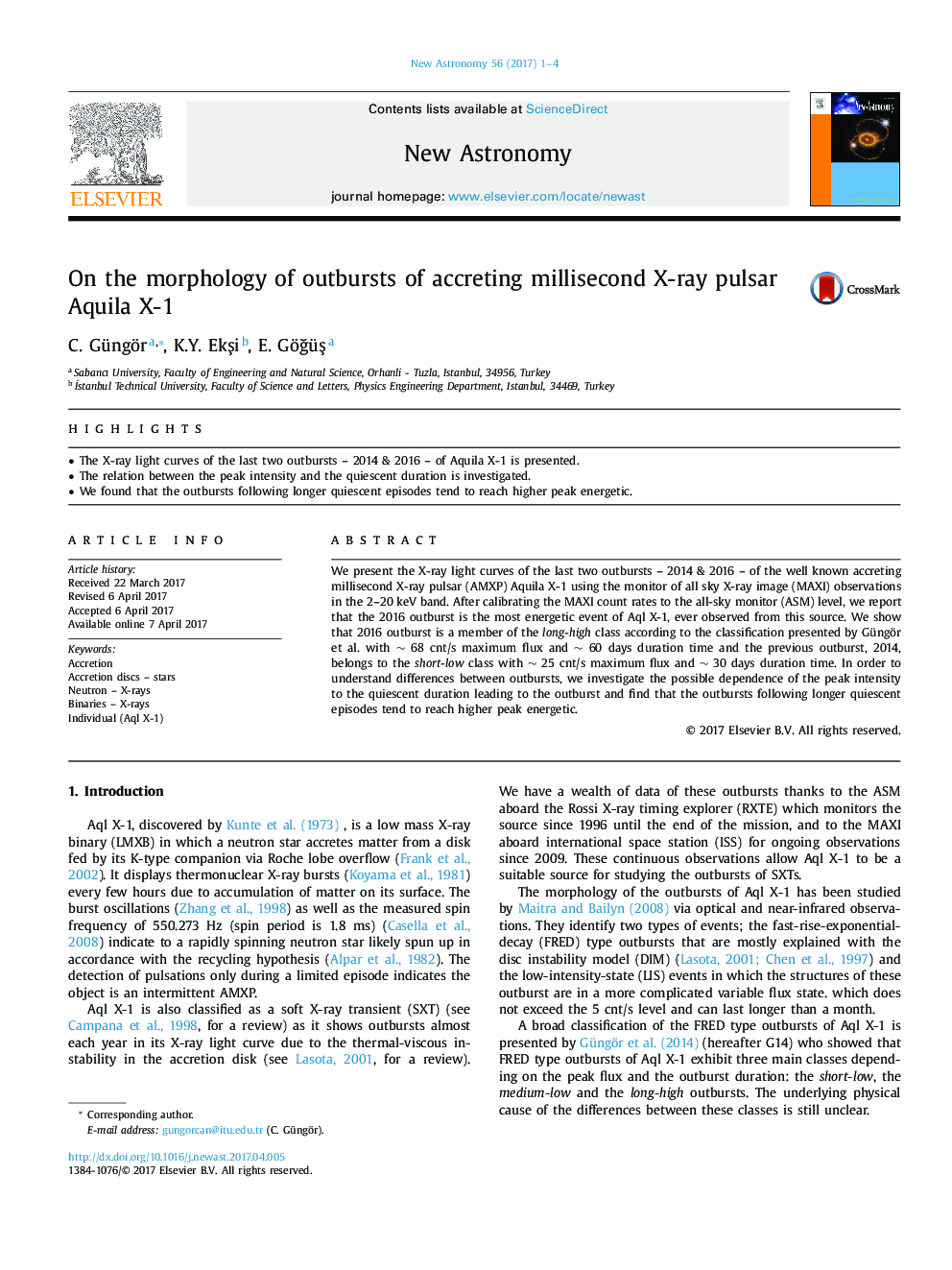| Article ID | Journal | Published Year | Pages | File Type |
|---|---|---|---|---|
| 5487783 | New Astronomy | 2017 | 4 Pages |
Abstract
We present the X-ray light curves of the last two outbursts - 2014 & 2016 - of the well known accreting millisecond X-ray pulsar (AMXP) Aquila X-1 using the monitor of all sky X-ray image (MAXI) observations in the 2-20 keV band. After calibrating the MAXI count rates to the all-sky monitor (ASM) level, we report that the 2016 outburst is the most energetic event of Aql X-1, ever observed from this source. We show that 2016 outburst is a member of the long-high class according to the classification presented by Güngör et al. with â¼ 68 cnt/s maximum flux and â¼ 60 days duration time and the previous outburst, 2014, belongs to the short-low class with â¼ 25 cnt/s maximum flux and â¼ 30 days duration time. In order to understand differences between outbursts, we investigate the possible dependence of the peak intensity to the quiescent duration leading to the outburst and find that the outbursts following longer quiescent episodes tend to reach higher peak energetic.
Keywords
Related Topics
Physical Sciences and Engineering
Physics and Astronomy
Astronomy and Astrophysics
Authors
C. Güngör, K.Y. EkÅi, E. GöÄüÅ,
